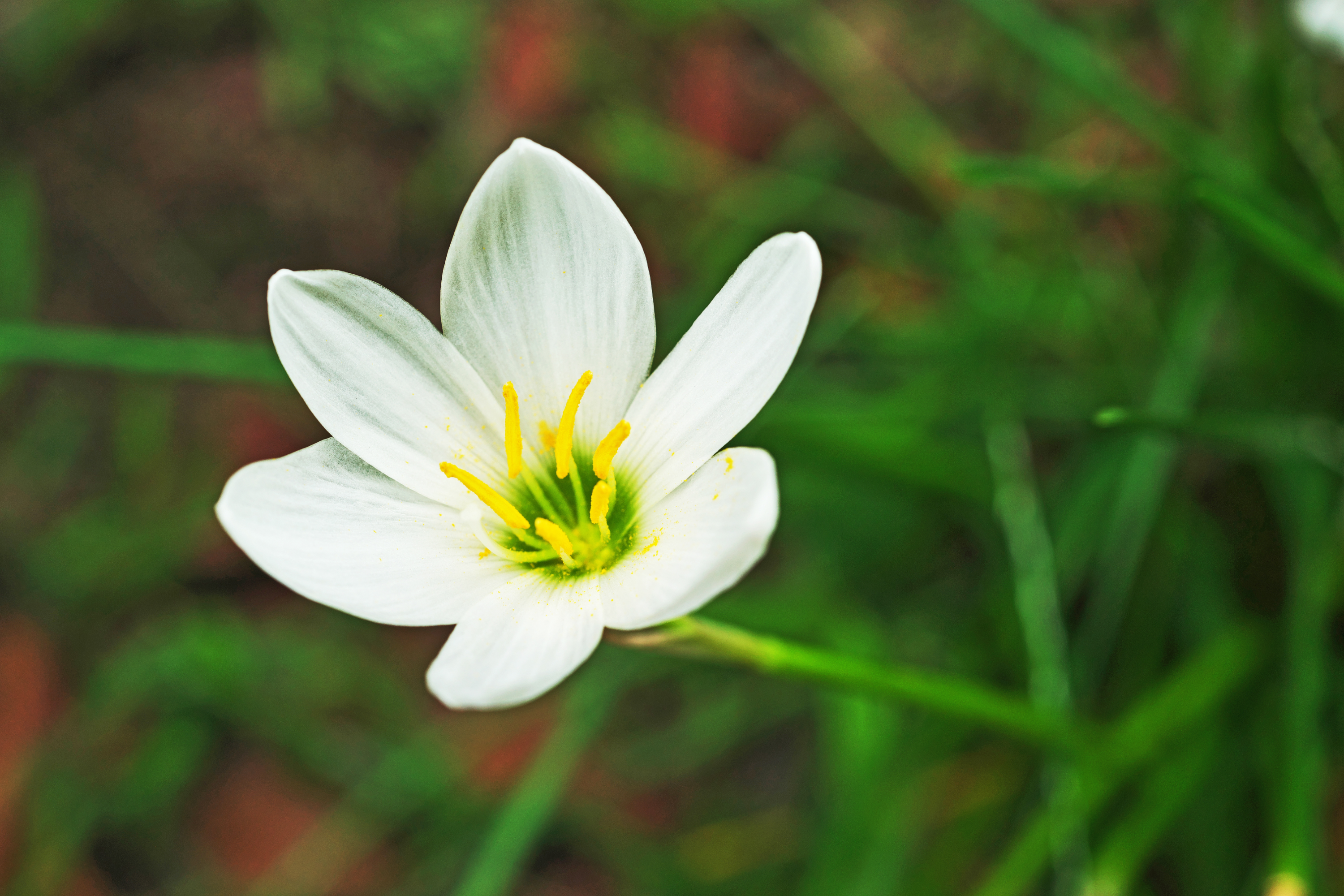White windflower
(Zephyranthes candida)

Description
Zephyranthes candida, commonly known as the White Rain Lily, is a beautiful flowering plant that belongs to the Amaryllidaceae family. It is native to the Americas, including Mexico, Central America, and parts of South America. The plant is a popular ornamental species due to its striking white flowers, which bloom during the summer months. In this article, we will provide an in-depth overview of Zephyranthes candida, including its taxonomy, morphology, habitat, cultivation, and medicinal uses. Taxonomy The genus Zephyranthes consists of approximately 70 species of perennial bulbs, which are commonly referred to as rain lilies. These plants are distributed throughout the Americas, with the greatest diversity found in Mexico and South America. The name Zephyranthes is derived from the Greek words "zephyros" and "anthos," which translate to "west wind" and "flower," respectively. Zephyranthes candida was first described by Linnaeus in 1753. It is a small herbaceous plant that typically grows to a height of 15 to 30 cm. The plant has long, narrow leaves that are green and strap-like in appearance. The leaves emerge from a bulb, which is small and globular in shape. Morphology The White Rain Lily produces beautiful white flowers, which are trumpet-shaped and approximately 5 to 6 cm in diameter. The flowers emerge from the bulb on tall, slender stalks that can reach a height of 30 cm. The plant typically produces a single flower per stalk, but it is not uncommon for multiple flowers to appear simultaneously. The flowers of Zephyranthes candida are bisexual, meaning they have both male and female reproductive organs. The plant is pollinated by a variety of insects, including bees, butterflies, and moths. The flowers are self-fertile, meaning they can produce seeds without the need for cross-pollination. Habitat Zephyranthes candida is native to a range of habitats, including grasslands, savannas, and open woodlands. The plant is adapted to a wide range of soil types, including sandy, loamy, and clay soils. It is also tolerant of both wet and dry conditions. The plant is found in tropical and subtropical regions, where it typically blooms during the summer months. In cultivation, Zephyranthes candida is a popular ornamental species due to its striking flowers and ease of cultivation. Cultivation Zephyranthes candida is a relatively easy plant to grow in cultivation. It prefers well-draining soils and is tolerant of both wet and dry conditions. The plant can be grown in full sun or partial shade, although it tends to produce more flowers in full sun. Propagation is typically done by dividing the bulbs. This can be done in the fall or spring, and the bulbs should be planted at a depth of approximately 5 cm. The plant can also be grown from seed, although this is less common. In cultivation, Zephyranthes candida is typically grown as a garden plant or in containers. It is also commonly used in landscaping projects and as a border plant. Medicinal Uses Zephyranthes candida has a long history of use in traditional medicine. The plant has been used to treat a variety of ailments, including headaches, fever, and inflammation. The bulb of the plant is particularly rich in alkaloids, which are believed to have medicinal properties. One of the primary active compounds in Zephyranthes candida is lycorine, which has been shown to have anti-cancer properties. The plant has also been used as an insecticide and as a treatment for fungal infections.
Taxonomic tree:







